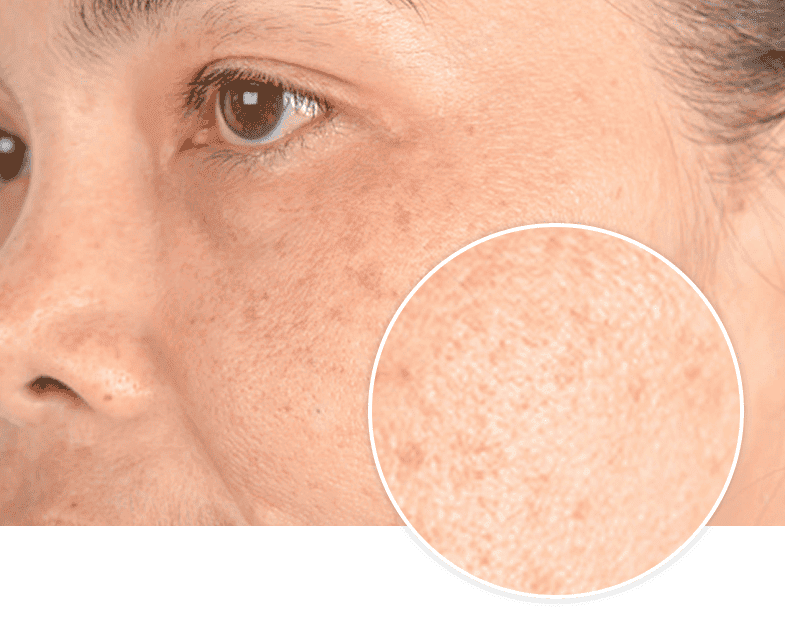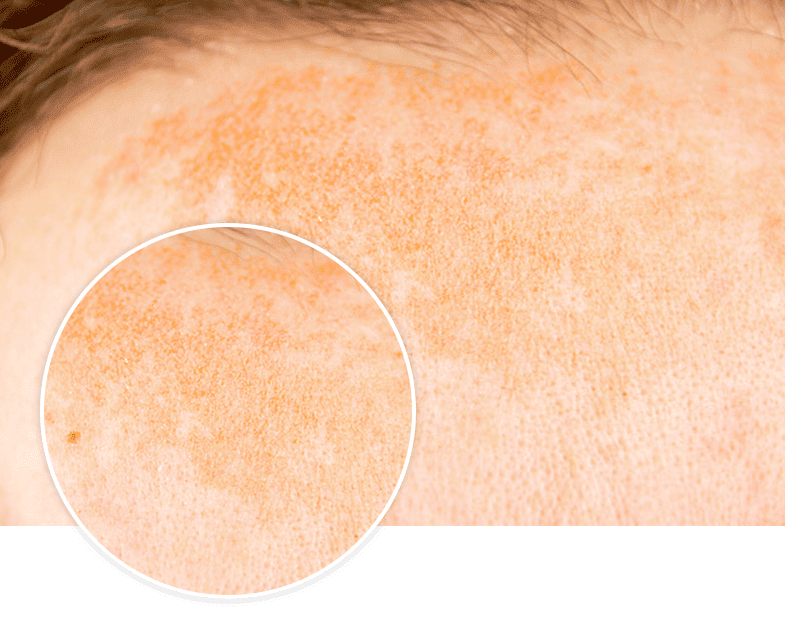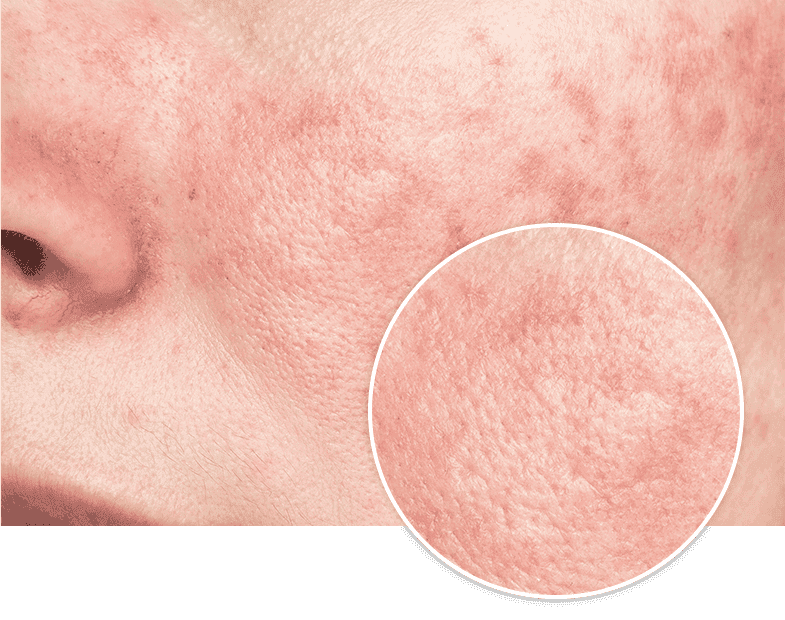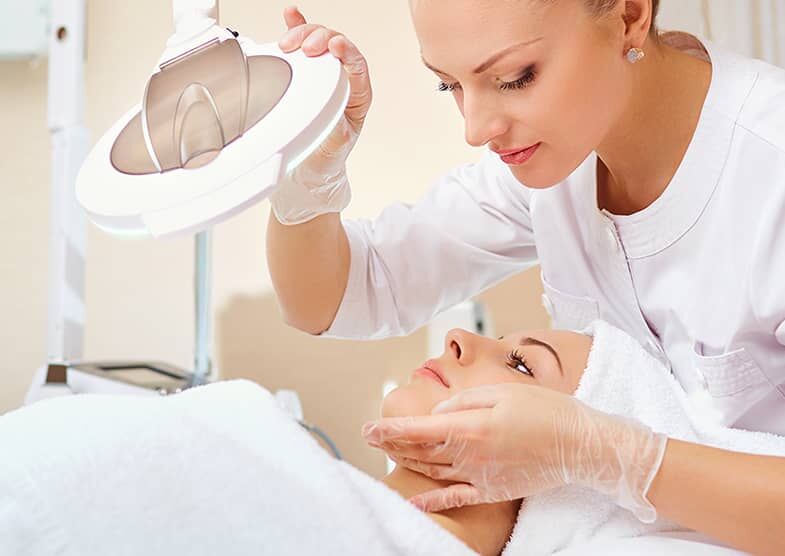Understanding Hyperpigmentation:
What is the difference between melasma, lentigo, and PIH?

Melasma
What Is Melasma and What Causes It? Melasma is a condition in which the facial skin develops patches of brown and tan discoloration due to hormonal imbalance leading to overactivation of melanin-producing cells. It commonly appears on the cheeks, nose, chin, and forehead.
Who Gets Melasma? Melasma affects predominantly women. Darker skin types are more prone to melasma. The condition appears during pregnancy in up to 50% of women and is often referred to as the "mask of pregnancy". Hormone therapy and oral contraceptives can also increase risk for melasma.

Lentigo
What Is Lentigo and What Causes It? Also known by a variety of names such as solar lentigo, sunspots, age spots, or liver spots. Lentigo is a common, benign hyperpigmentation condition affecting mostly the sun-exposed areas of the face and the backs of the hands. The name lentigo comes from the word lentil and these spots often resemble lentils in color.
Who Gets Lentigo? The most common form of lentigo is called lentigo simplex. These hyperpigmented spots are present at birth or develop in early childhood. Lentigo can also occur in eczema and psoriasis patients who receive UV treatment and in cancer patients who receive radiation therapy to the skin.

Post-Inflammatory Hyperpigmentation (PIH)
What Is PIH and What Does It Look Like? PIH is a common skin disorder that occurs after the skin experiences inflammation. PIH looks like irregularly shaped patches of darkened skin in the location where the skin was previously inflamed. If the outer (epidermal) layer of skin is affected PIH can appear tan, brown, or dark brown in color. These areas may resolve on their own over months to years. If the deeper (dermal) layer is affected, it can appear blue-gray and may be permanent.
Who Gets PIH? Though PIH can occur in any skin type, it is more common and more persistent in darker skin colors. A variety of events can trigger PIH, including inflammatory acne, allergic reactions, burns, chemical peels, laser therapy, insect bites, and psoriasis, among others.

Dermatologist-Recommended Tips for Hyperpigmentation
Treat the Underlying Cause - Treating the symptoms will temporarily improve the skin's appearance but it's not effective long-term. This is especially relevant for melasma, which is caused by a hormonal imbalance.
Moisturize - Keeping the skin hydrated promotes rapid cell turnover so that, as the brightening ingredients in skincare products do their job the old hyperpigmented cells can be removed for faster, more effective results.
Avoid Irritating Affected Areas - Picking at pimples or being aggressive with treatments can irritate the skin, leading to more hyperpigmentation.
Start Treatment Early - Pigmentation can gradually work its way into the deeper layers of skin where it's more difficult to treat. Starting treatment at the first signs can prevent hyperpigmented areas from worsening.

What Ingredients Help To Get Rid Of Hyperpigmentation?

Antioxidants, like Vitamin C inhibits melanin production and works synergistically with vitamin E, producing significantly better results when used in combination than either one individually. Niacinamide blocks interaction between skin cells and melanin-producing cells.

Botanicals, and various plant-derived compounds confer anti-inflammatory benefits. Some of these include milk thistle extract, resveratrol from grape seeds, aloe vera, green tea, soy, and licorice.

Tranexamic Acid, a synthetic derivative of the amino acid lysine, brightens the skin and reduces the appearance of hyperpigmentation for a more even skin tone.

Azelaic Acid, inhibits melanin production and selectively kills hyperactive melanin-producing cells without harming normally pigmented cells. Azelaic acid has demonstrated benefits in the treatment of PIH.

Glycolic Acid, an alpha-hydroxy acid has been found to produce excellent results with a high safety profile and can even be used for delicate skin, such as the skin around the eyes.

Mineral SPF Filters, UV rays from the sun and even visible light stimulate melanin production and lead to hyperpigmentation. A high-powered sunscreen, potentially containing UV-blocking zinc-oxide or titanium-oxide is recommended.

When to Talk to Your Dermatologist
You Are Uncertain As To The Cause Of The Hyperpigmentation.
To treat hyperpigmentation safely and effectively it's important to know the cause. If the reason for your hyperpigmentation is not related to one of the conditions discussed here, consult with your dermatologist before starting treatment.
Hyperpigmentation Does Not Respond To Treatment.
Hyperpigmentation can be a challenging condition, even for professionals. If home treatment doesn't produce results, consult with your dermatologist for advice and other potential options.
There Is Pain Or Itching In Affected Areas.
These symptoms can indicate an underlying infection or inflammatory process that may require medical attention.
Unusual Colors Develop In Affected Areas. Some forms of hyperpigmentation can become cancerous over time and cancer can be mistaken for hyperpigmentation.
